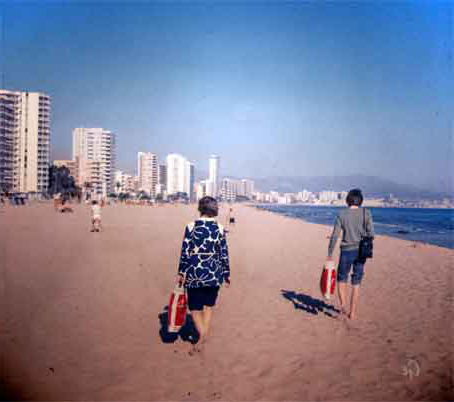
3. april 1972, Playa Levante, Benidorm
This is perhaps one of the best known beaches in
Europe.
This is an urban beach over 2 km long that runs from
Punta Pinet to Punta Canfali. A stretch of fine golden sand bathed by the calm waters of the Mediterranean
and sun all day thanks to its south facing orientation.
The services on offer are very complete including life
guard surveillance and equipment, as well as other
services such as: sun loungers, foot showers, walkways,
and play areas for children. Running parallel to the
beach is the bustling promenade full of restaurants
and bars always a hive of activity, with people from
all nationalities.
Features:
- Length: 2,084 metres,
- Average Width: 55 metres.
- Maximum
width: 75 metres,
- Minimum width: 20 metres
- Sand
surface: 125,785 m2.
https://en.visitbenidorm.es/ver/148/benidorm-levante-beach.html
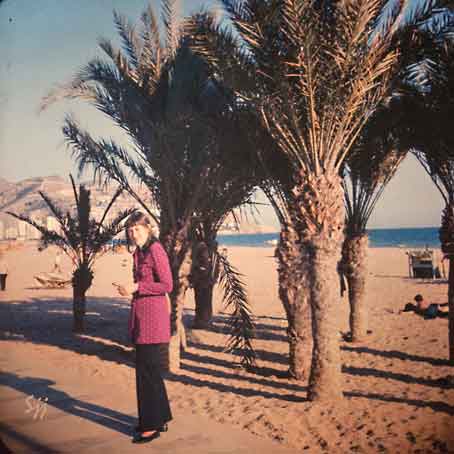
27. mars 1972
Benidorm
It is thought there were settlements in the Benidorm area
possibly as far back as 3000 BC, including evidence of Roman
and Punic remains. However, settlements in the area were
small and it was not until the arrival of the Moors that the
local population began to grow. The Christian King James I of Aragon reconquered the region in 1245 and Benidorm first
officially became known in 1325, when Admiral Bernat de
Sarrià of Polop awarded it a town charter as a way of
removing the Moors and allowing Christians to inhabit the
area.
Benidorm's history for the next few centuries was plagued
by attacks from the sea by Ottoman and Barbary pirates.
The 17th century saw conditions improve for Benidorm and
its people, most notably with the construction of an
advanced irrigation system in 1666 to channel water to the
region. By the 18th century Benidorm fishermen had become
famous and sought after all over Spain and beyond. Tuna
was their main catch and they perfected the ancient
almadraba technique dating from Islamic times. The success
of the fishing industry, together with improved local
agriculture, helped to fuel a strong local economy. Coastal
traffic increased too, bringing more wealth to the region
with the town becoming a base for sea captains and the
building of their vessels.
In 1952 Benidorm's fishing industry went into decline; this
was a factor in encouraging the town council to approve
many new development plans aimed at the tourist market.
Today the town is Europe's and Spain's biggest holiday
resort[citation needed] and responsible for a significant
chunk of Spain's large tourist industry, with five million
tourist arrivals per year.
https://en.wikipedia.org/wiki/Benidorm
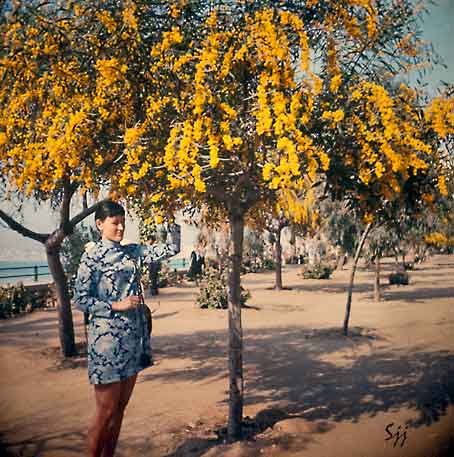
3. april 1972. Mimosaen blomstrer i Benidorm
Playa Poniente
This is the longest beach in the resort, more than
3 km long, making it an ideal place to stroll along the
shore. Is characteristically quieter than Levante beach .
It is an urban beach with a new modern promenade
designed by the architect Carlos Ferrater and with a
large number of restaurants and bars and clubs to enjoy.
http://en.visitbenidorm.es/ver/147/playa-de-poniente-benidorm--playas-y-calas-.html
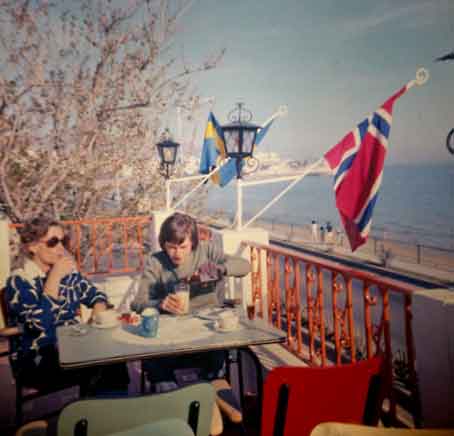
3. april 1972, Den norske restauranten Bolero i Benidorm
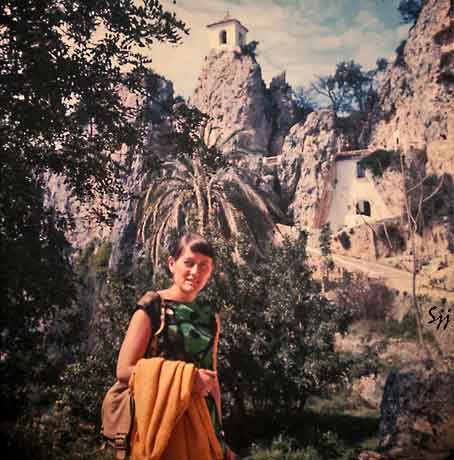
2. april 1972, utflukt til Guadalest
The Alcozaiba fortress
The Castle of Alcozaiba is located in the part of the rocky
cliffs of greater verticality of the town of El Castell de
Guadalest, province of Alicante. The fortress of Alcozaiba
was built in the 11th century by the Muslims, and is located
in the domain of the old Casa Orduña. Guadalest, a town of Islamic origin, whose fortifications were considered very valuable, was conquered by the troops of Jaime I, who
yielded it to Vidal de Sarrià, whose family he belonged to
until 1335, and later to the Infante Pedro de Aragón.
(7. juli 2022)
Castillo de la Alcozaiba - Guadalest in Alicante, Spain with Ratings & Reviews - Alicante Runaway Travel Guides
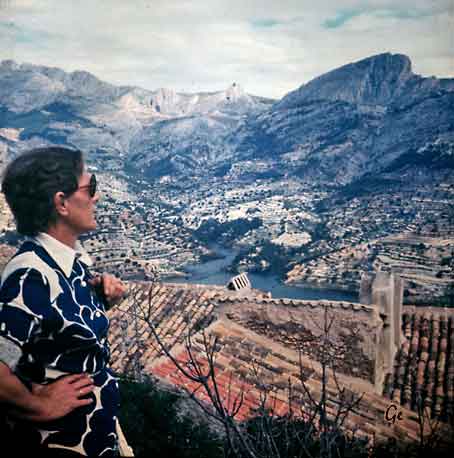
2.april 1972, utflukt til Guadalest
El Castell de Guadalest,
The medieval castle overshadowing the Guadalest valley was originally built in the 11th century, during the Muslim rule
over the Iberian Peninsula. It served to control the valley, as infighting between the smaller kingdoms left by the disintegration of the Caliphate of Córdoba was constant.
In the 13th century, after the Christian conquest of the region, the castle and the town were incorporated into the Kingdom
of Valencia by James I of Aragon. As Christian colonization
was anecdotal, Muslim inhabitants of the region were allowed to remain in the valley and work its land until the expulsion of the Moriscos. The site then changed hands over the centuries.
El Castell de Guadalest - Wikipedia (7. juli 2022)
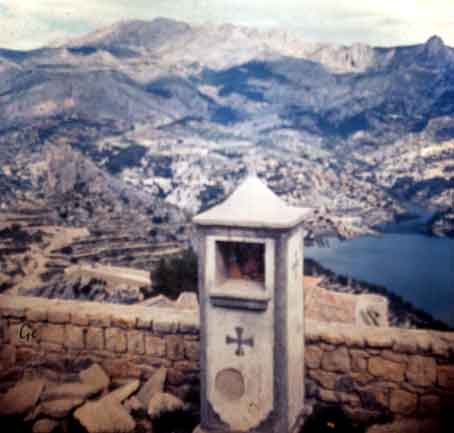
2. april 1972, utflukt til Guadalest
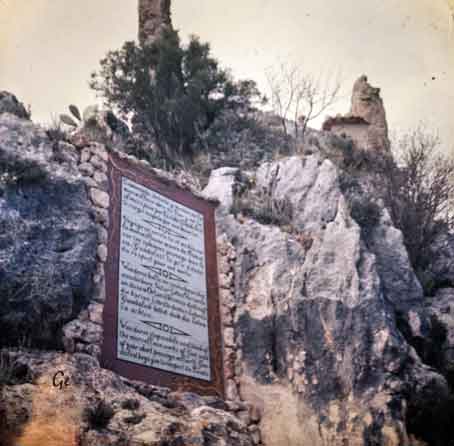
2. april 1972, om Guadalest
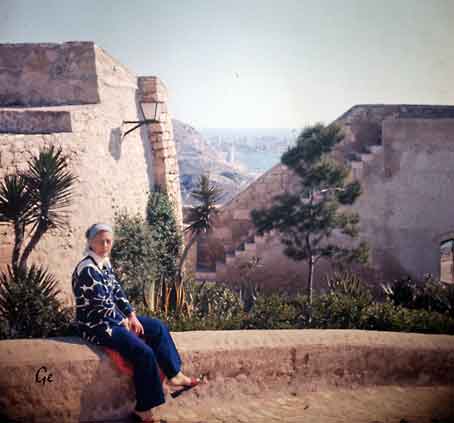
1. april 1972, Santa Barbara, Alicante
Santa Bárbara Castle (Valencian: Castell de Santa
Bàrbara, Spanish: Castillo de Santa Bárbara) is a
fortification in the center of Alicante, Spain.
It stands on Mount Benacantil (166 m).
Bronze Age, Iberian, and Roman artifacts have been
found on the slopes of the mountain, but the origins of
the castle date to the 9th century at the time of Muslim
control of the Iberian Peninsula, from 711 till 1296.
The Arab medieval geographer Al-Idrisi calls this
mountain Banu-lQatil, and the toponym may derive
from the words pinna (Arabic for "peak") and laqanti,
adjectival form of Laqant, the Arabic name for Alicante.
https://en.wikipedia.org/wiki/Santa_B%C3%A1rbara_Castle
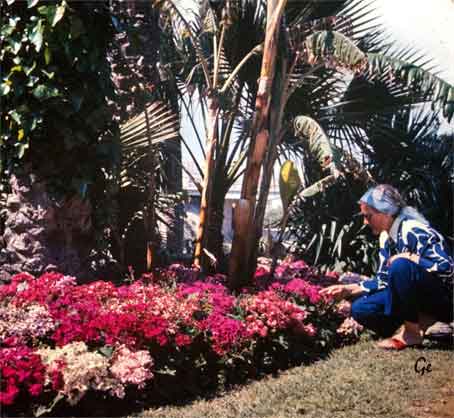
1. april 1972, Elche, Alicante
Elche (/ˈɛltʃeɪ/, Spanish: [ˈelʲt͡ʃe]), or Elx (Valencian: [ˈɛʎt͡ʃ]),
is a town located in the comarca of Baix Vinalopó, Spain.
According to the 2014 census, Elche has a population of
some 228,647 inhabitants (called il·licitans in Valencian
and ilicitanos in Spanish), ranking as the third most
populated city in the Valencian Community (after Valencia
and Alicante) and the 20th largest Spanish city.
Part of the municipality is coastal but the main city is
some 11 km(6.8 mi) from the Mediterranean Sea. A small
creek called Vinalopó flows through the city splitting it in
two parts.
https://en.wikipedia.org/wiki/Elche